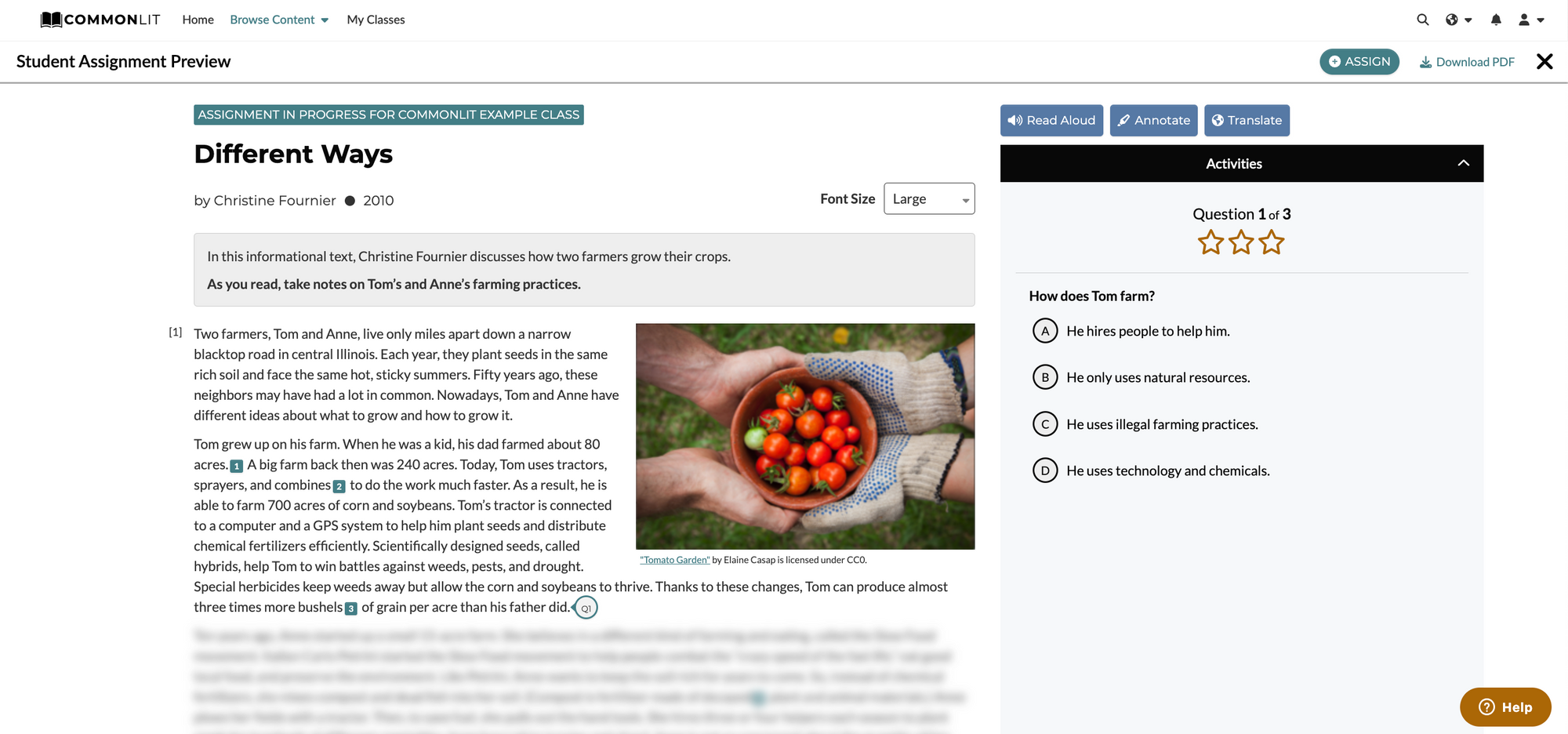 Secondary Classrooms
7 Informational Texts About Food That Secondary Students Will Devour!
Secondary Classrooms
7 Informational Texts About Food That Secondary Students Will Devour!
Reading comprehension instruction should leave students wanting more, and this round-up of informational texts about food is sure to leave your secondary students hungry to continue reading.
From the history and invention of foods to contemporary food innovations, each of these informational texts from CommonLit’s online reading program will spark deep conversation and high intellectual engagement from your students, making them the perfect spice to add to your ELA curriculum.
“Farms of the Future” by Tracy Vonder Brink (6th grade)
In this informational text, Tracy Vonder Brink discusses the way in which farming may need to innovate in the future. From vertical greenhouses to smart farming, your students will be entranced while learning about the different ways the way food is produced may change.
After reading this text, invite students to discuss Discussion Question 1, “The author describes various solutions to growing more food with less land. Which solution do you think will be the most successful in the future? Why? What other farming solutions can you think of?”
“Different Ways” by Christine Fournier (6th Grade)
This text traces the farming techniques of two very different farmers: one focused on using technology and another focused on sustainability.

Expand students’ background knowledge with both Related Media video resources: “This Farm of the Future Uses No Soil and 95% Less Water” and “What Cuba Can Teach America About Organic Farming.” After watching both, ask students, “How do the farming practices in the video compare to the farming practices discussed in the text?”
“Your Food Choices Affect Earth’s Climate” by Janet Raloff (7th grade)
New research has illuminated the connection between meat consumption and the release of greenhouse gasses. This text asks students to consider the impact of their food choices on the environment.
Invite your students to collaborate and brainstorm their own solutions to environmental issues through Discussion Question 2, “In the text, the author discusses how the environment is impacted by not just what we eat, but how that food is grown or raised. Based on what you’ve read and other thoughts you may have, how can food be grown and raised to be more environmentally friendly?”
“Genetically Modified Salmon: Food or ‘Frankenfish’?” by Monique Conroe (7th grade)
A technology company has been able to develop genetically modified salmon that grow at twice the natural rate; this text traces the arguments of whether or not these fish should be sold to consumers.
This text is great for cross-departmental literacy instruction and planning! Ask students to share their thoughts around Discussion Question 1, “Based on what you have learned in science class, what might happen if AquaAdvantage Salmon were released into the wild? List all of the possible effects?”
“How an 11-year Old Boy Invented the Popsicle” by Shelby Pope for NPR (8th grade)
Follow how Frank Epperson invented one of many students’ favorite treats: the popsicle! This chronological informational text traces its history from happy accident to universal frozen delight.
Provide students additional background knowledge about Epperson’s invention with the Related Media Video “Frank Epperson and the Popsicle - Stuff of Genius.” After watching, ask students, Discussion Question 1, “Does Frank Epperson deserve credit for inventing the Popsicle? Why or why not?”
“Army Eyes 3-D Printed Food” for Soldiers by Aarti Shahani (8th grade)
This informational text highlights how 3-D printing is innovating the food industry to serve both soldiers and consumers!
While reading the text, guide student annotations to uncover the author’s point of view towards the topic of 3D food in order to prepare them to answer Assessment Question 5, “What is the author’s perspective on 3-D food? Cite evidence to support your answer.”
Next Steps
Want more great texts from CommonLit’s digital literacy library? Check out our topical text sets that make a great addition to any ELA curriculum.
Check out our free webinars for seasonal text suggestions as well!

